How to Rank #1 on Google Ads: Complete Shopping & Search Guide 2025

Video Breakdown:
Written Breakdown:
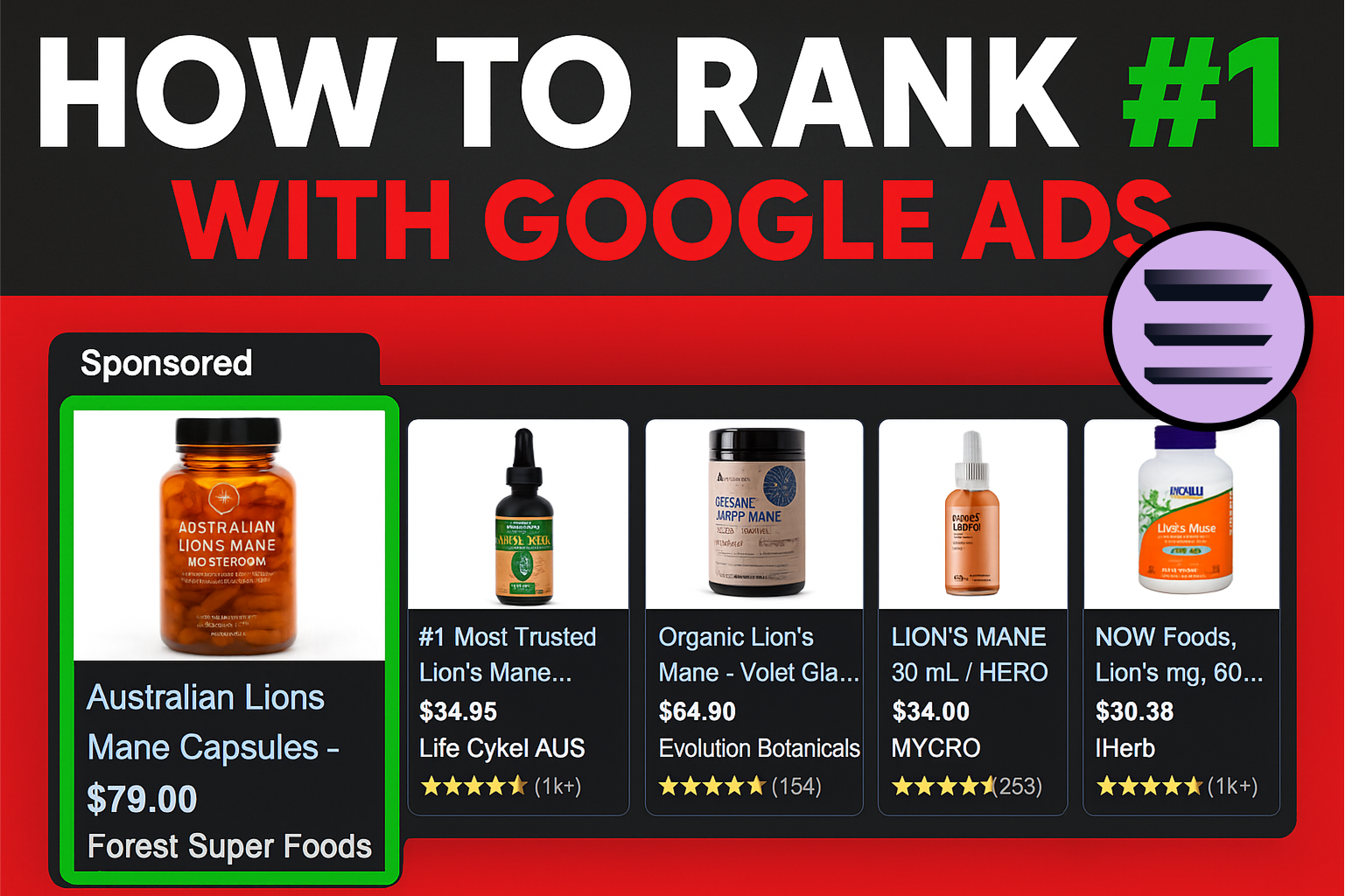
Most business owners think ranking #1 on Google is about who spends the most money. They throw thousands at higher bids, watch competitors outrank them, and see their Google Ads budget grow while results stay flat.
This approach is completely backwards.
Our team has worked with brands like Collagen Co, Forest Superfoods and more who dominate Google Shopping results for highly competitive keywords like "collagen" and "supplements." These clients didn't outspend their competition, they outsmarted them.
The secret lies in our three-part protocol that top-performing brands use to dominate both Google Search and Shopping results:
- Quality Score Mastery - Optimizing the three critical components Google grades your ads on
- Strategic Tracking - Monitoring specific metrics that indicate true position #1 dominance
- Shopping Optimization - Leveraging the four-factor ranking system most brands ignore
Understanding Google's Ad Rank Formula
Google uses a multiplication formula that determines ad position: Ad Rank = Bid × Quality Score
The advertiser with the highest ad rank gets position #1—not the highest bid.
Quality Score vs. Bid Amount Mathematics
Here's the math with a real example. You're targeting "organic dog food" with a $3.00 bid and optimized quality score of 9:
- Your ad rank: $3.00 × 9 = 27
Your competitor bids $4.00 (33% higher) with poorly optimized quality score of 3:
- Their ad rank: $4.00 × 3 = 12
You win position #1 while they spend 33% more per click ranking below you.
We've audited hundreds of Google Ads accounts. Over 90% focus only on bid adjustments, fighting an expensive battle they can't win. Quality score becomes even more critical with Google's AI-powered campaigns, which rely heavily on landing page content and product feed data.
Mastering Google Ads Quality Score: The 3 Critical Components
Google grades campaigns on three factors that directly impact position and cost per click:
Grade 1: Expected Click-Through Rate Optimization

Expected click-through rate measures how likely people are to click your ads based on keyword, ad copy, and historical performance.
Ensure your Google Ads headline includes the exact target keyword, ideally at the start, to match the user’s search query. For example, if the search is “organic dog food,” your headline should begin with “organic dog food.” This close alignment with the search term enhances ad relevance, significantly boosting click-through rates (CTR), particularly on mobile, as fully optimized ads with keyword-relevant headlines outperform those with partial or broad matches.
Use power words that create urgency and trust:
- Premium, Guaranteed, Certified, Exclusive, Limited-time
Add specific numbers for credibility:
- Save 30%, Five-star rated, 24-hour shipping, 90-day guarantee
Include social proof when accurate: "vet recommended," "customer favorite," "bestseller."
[QUOTE] Transform weak copy like "dog food for sale" into compelling headlines: "Premium Organic Dog Food - Vet Recommended Free Shipping."
The optimized version targets quality-conscious pet owners and addresses shipping concerns.
Grade 2: Ad Relevance Mastery
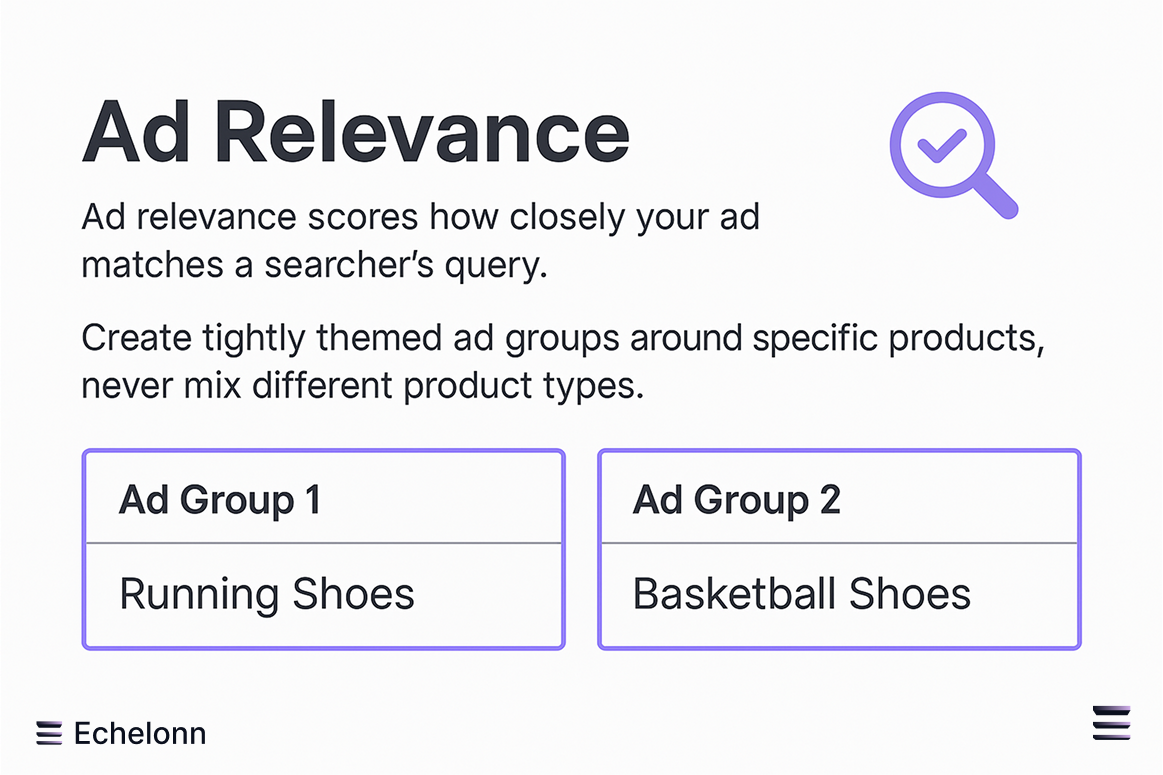
Ad relevance scores how closely your ad matches searcher query. Create tightly themed ad groups around specific products; never mix different product types. Running shoes and basketball shoes need separate ad groups for granular budget control and better relevance scores.
Exact keyword matching between search queries and headlines is non-negotiable. If someone searches "women's running shoes," your headline must include "women's running shoes"—not just "running shoes."
Grade 3: Landing Page Experience Optimization
Landing page experience carries more weight than most advertisers realize and becomes critical with Google's AI-powered campaigns that use website content to generate ads automatically.
Visitors must see confirmation they're in the right place within three seconds. Your main headline should match your ad headline. If your ad promises "organic dog food," feature that prominently on your landing page.
Create keyword-specific landing pages for high-value terms. We worked with Peach Perfect on their PCOS multivitamin campaign, building a dedicated page targeting "weight loss PCOS."
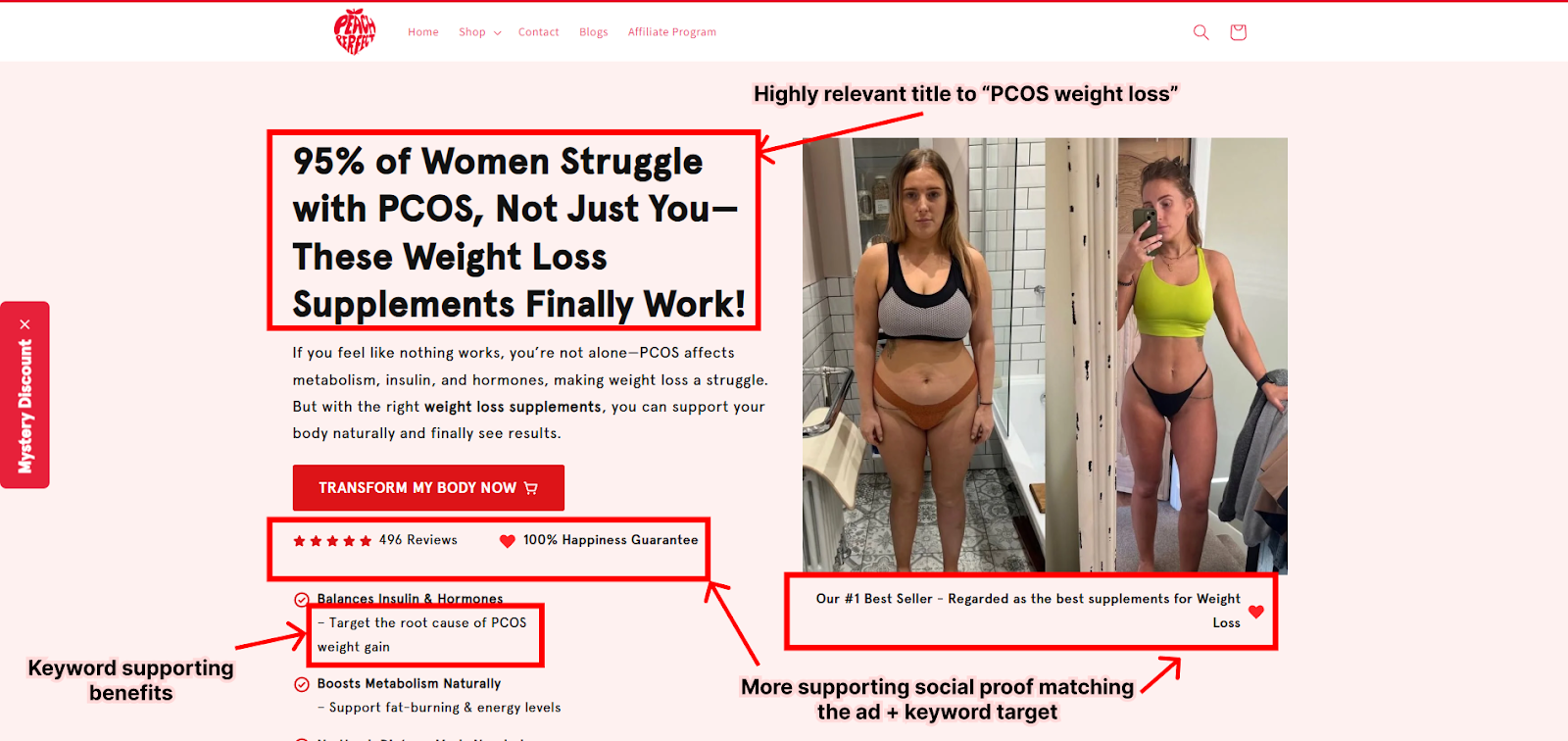
The page addressed hormonal imbalance, insulin resistance, and slowed metabolism with targeted copy like "supports hormonal weight management."
Keep loading times under 2.5 seconds. Pages loading in 1 second can convert at 2.5x to 3x the rate of pages that load in 5 seconds. Mobile optimization is essential since most shopping happens on mobile devices.
Tracking Your Path to Position #1: Essential Metrics and Tools
Beyond quality score optimization, specific metrics reveal true dominance in top rankings.
Google Ads Dashboard Metrics That Matter
Add these three critical columns in your keywords section:
- Absolute top impression share - Percentage of time your ads appear in first position
- Top impression share - How often you appear above organic results
- Search impression share - Total visibility for target keywords
Benchmarks for dominance:
- Absolute top impression share below 60% = competitors stealing prime real estate
- Top impression share under 70% = quality score issues need attention
- Search impression share below 80% = budget constraints or poor ad relevance
Competitive Intelligence Through Auction Insights
Access auction insights through your keywords tab to see competitor impression share, overlap rate, and average position data. Cross-reference with SEMrush for spending estimates and Google Ads Transparency Center for competitor ad copy and landing pages.
High overlap rates (80%+) with specific competitors mean you're fighting for identical audiences, helping prioritize which competitors to outrank first.
Google Shopping Ads: The 4-Factor Ranking System
Google Shopping ads use a completely different ranking system than search ads, based on four critical factors:
Factor 1: Product Feed Optimization Mastery
Google doesn't use keywords for shopping ads—it reads your product feed to match products with searches.
The Strategic Title Formula
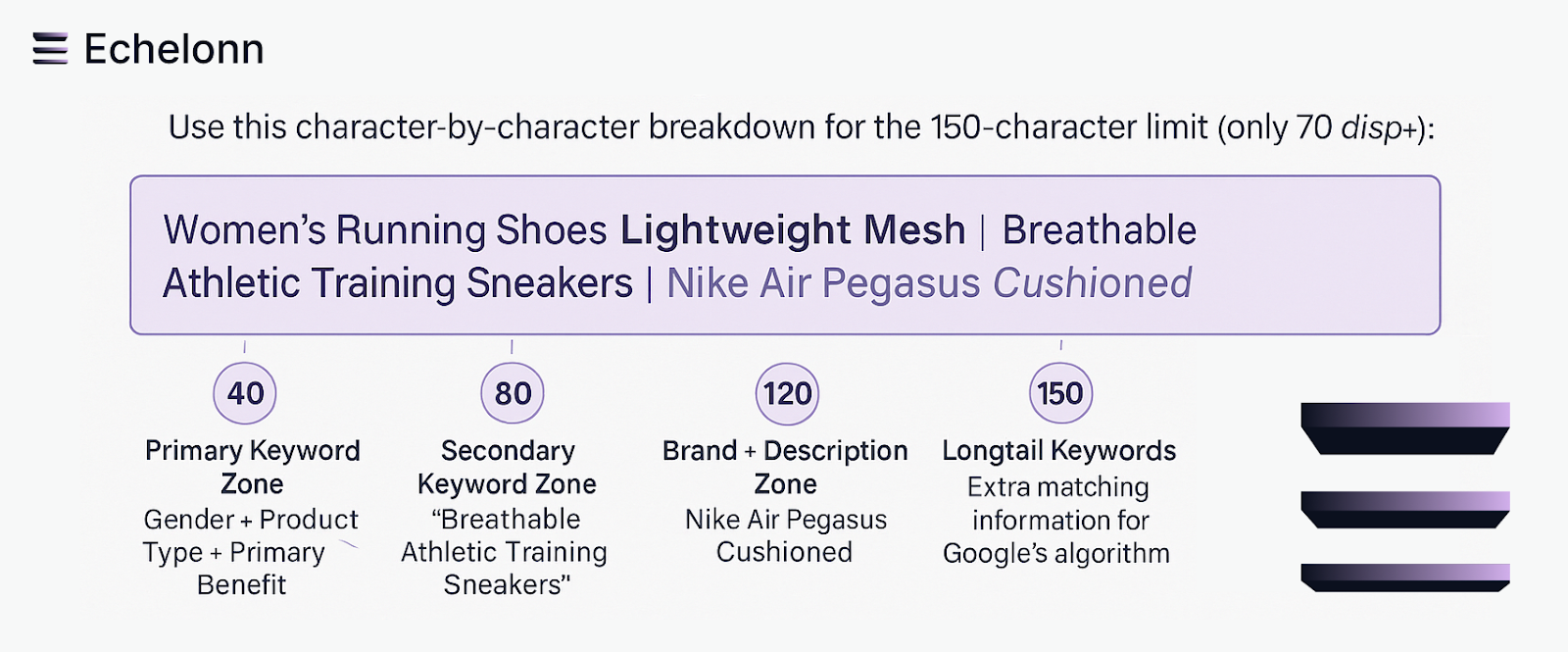
Use this character-by-character breakdown for the 150-character limit (only 70 display):
Characters 1-40: Primary Keyword Zone Gender + Product Type + Primary Benefit Example: "Women's Running Shoes Lightweight Mesh"
Characters 41-80: Secondary Keyword Zone "Breathable Athletic Training Sneakers"
Characters 81-120: Brand + Description Zone "Nike Air Pegasus Cushioned"
Characters 121-150: Longtail Keywords Extra matching information for Google's algorithm
This optimized approach typically results in 100-150% increase in impression share.
Required Attributes
- Gender: Male, female, or unisex (67% of shopping searches include gender intent)
- Age Group: Adult, kids, toddler, infant, newborn
- Product Type: Category > Subcategory > Specific Type
Factor 2: Google Merchant Center Performance Optimization
Your merchant center scorecard directly impacts rankings across four areas:
Install review apps, enable Google's customer reviews program, and complete all business information. High performance scores lead to improved ad visibility through better trust signals.
Factor 3: Strategic Google Shopping Bid Strategy
Let Google collect auction data with moderate bids before making optimization decisions for 2 weeks minimum.
Tiered Bidding Using Custom Labels
Create custom labels for:
- Performance tier (Champions, Contenders, Prospects)
- Profit margin levels (High 60%+, Medium 40-59%, Low 20-39%)
- Competition intensity
- Seasonality factors
Bid aggressively on best performers and high-margin products, moderately on good products, conservatively on standard products.
Factor 4: User Experience Optimization
When people click shopping ads, they need confirmation within 3 seconds:
- Product images must match shopping ads exactly
- Prices must be identical between ad and landing page
- Page load speed under 2.5 seconds
- Immediate product visibility confirmation
Advanced Custom Label Strategy for Bid Optimization
Transform random bidding into strategic product segmentation using Google Shopping's five custom labels:
- Custom Label 0: Performance tier (Champions get 40-60% higher bids)
- Custom Label 1: Profit margin (High-margin items support aggressive bidding)
- Custom Label 2: Competition level (High-competition requires 30-50% higher bids)
- Custom Label 3: Seasonality (Peak season gets 50-100% increases)
- Custom Label 4: Product launch phase (New launches need careful nurturing)
Using seasonal custom labels during peak periods often results in ROAS improvements ranging from 40% to 85%.
Implementation Roadmap: From Setup to #1 Rankings
Phase 1: Foundation Setup (Week 1-2)
- Create tightly themed ad groups (5-10 keywords maximum)
- Upload optimized product feed with required attributes
- Configure custom labels and conversion tracking
- Let Google collect auction data
Phase 2: Quality Score Optimization (Week 3-4)
- Rewrite ad copy with power words and exact keywords
- Create keyword-specific landing pages
- Optimize page load speed under 2.5 seconds
- Target: Quality scores above 7 for 60% of keywords
Phase 3: Shopping Feed Mastery (Week 4-5)
- Implement strategic title formula
- Add high-impact optional attributes
- Set up automated feed updates
- Monitor feed processing errors daily
Phase 4: Competitive Intelligence & Bidding (Week 5-6)
- Run auction insights reports
- Implement tiered bidding based on custom labels
- Cross-reference competitor data with SEMrush
- Set up device and location optimization
Phase 5: Advanced Optimization & Scaling (Week 7-8)
- A/B test landing pages (successful tests typically show 10-15% conversion lift)
- Achieve 95%+ purchase experience scores
- Implement dynamic content and remarketing
- Target: Position #1 for 20-30% of target keywords
Conclusion: Systematic Optimization vs. Competitor Money-Wasting
While competitors increase bids in bidding wars, systematic optimization delivers three critical advantages:
- Lower cost per click through higher quality scores
- Better ad positions with smaller budgets
- Sustainable growth during competitive seasons
Google's algorithms follow predictable formulas. Understanding these gives permanent competitive advantages. When competitors spend 33% more per click due to poor optimization, that waste compounds monthly.
Every day you delay implementing these systems gives competitors time to capture market share that could be yours.

Ready To Start Scaling Today?
Scaling Your Favorite eCommerce Brands To The Highest Levels Through Google & YouTube Ads.

.svg)
Get Smarter About How To Scale Your Brand...
Discover Insider Knowledge On How We Scale Brands From 7 Figures All The Way Up To 8-9 Figures With Google Ads.
More Articles Like This.
Find answers to common queries about our services and how we can help you.
.svg)
.png)
How to Improve Your Google Ads Conversion Rate
.png)
The Right Way to Link Shopify and Google Ads for Scalable Growth
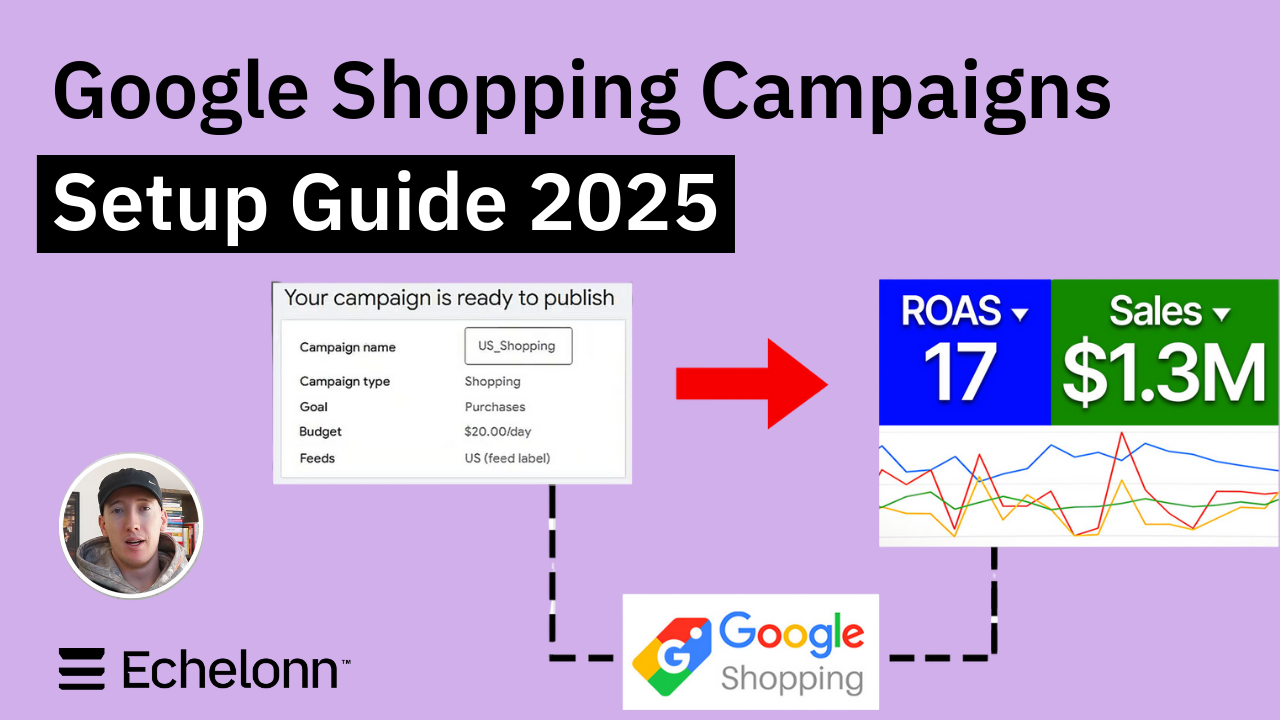
Google Shopping Campaigns Setup Guide 2025
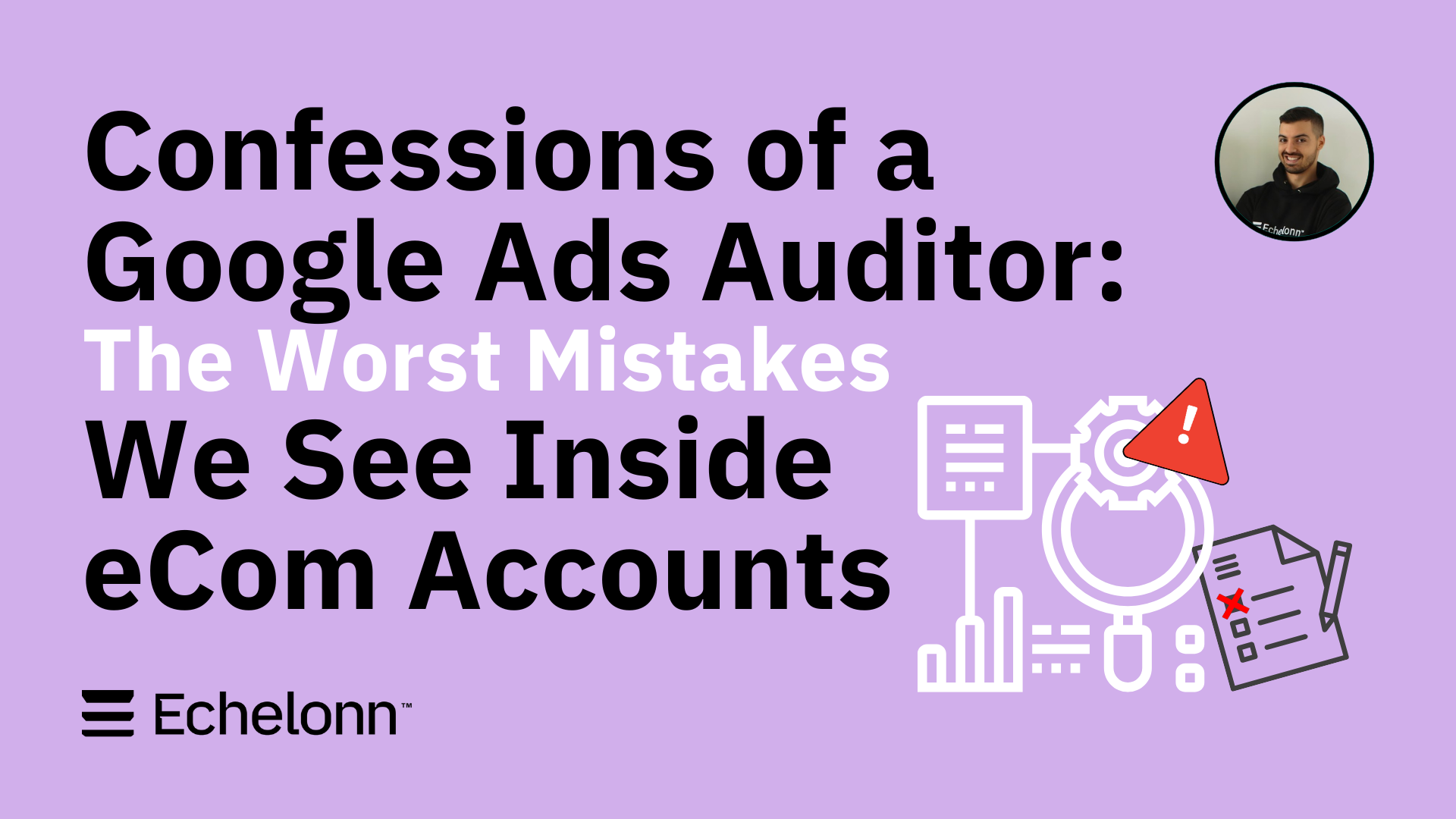
Confessions of a Google Ads Auditor: The Worst Mistakes We See Inside eCom Accounts
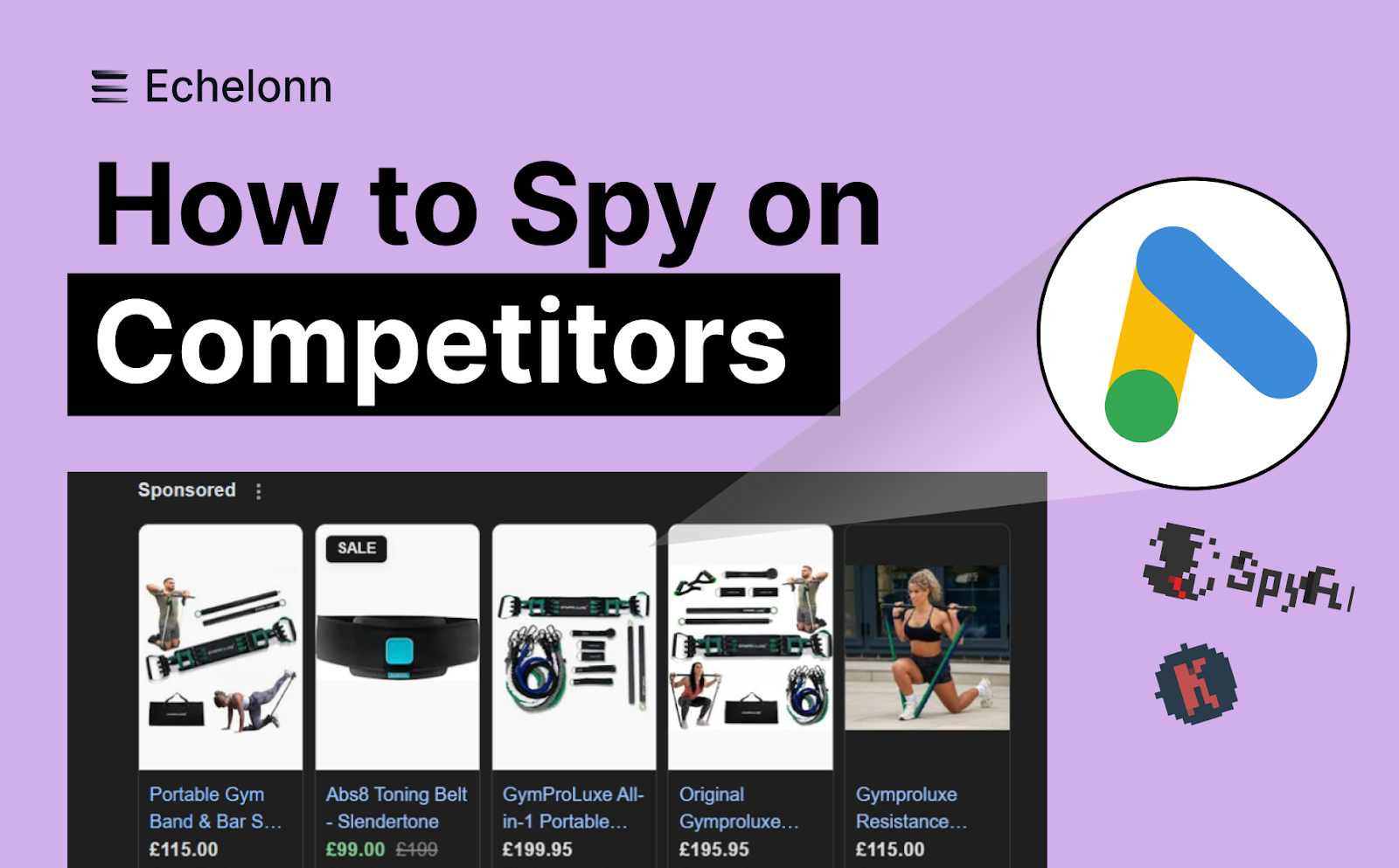
How to Spy on Competitor Google Ads: Complete 2025 Guide
%20(2).png)
7 Questions to Ask Before Hiring a Google Ads Consultant

How to Rank #1 on Google Ads: Complete Shopping & Search Guide 2025
.png)
Learning Google Ads in 2025: The Roadmap Nobody Talks About
%20(1).png)
What Makes a Google Ads Specialist Worth $10,000/Month?

Why Cheap Google Ads Consulting Costs You $180,000+ in Lost Revenue
.png)
Why 99% of Google Ads Experts Fail (& How to Find One That Won’t)
.png)
5 Google Product Feed Fixes for eCom Growth
.png)
Google Ads Campaign Structure: Why 95% of Brands Waste Budget on Mixed Traffic

In-House vs Agency Google Ads: Which Delivers Better ROI in 2025?
.png)
How to Scale Google Ads With a Small Budget | Setup and Optimization

Google Shopping Optimization: 11 Proven Tactics for Maximum ROAS
%20(3).png)
eCom Growth Strategy: How We Scaled a Supplement Brand From $1.9M to $8.6M With Google Ads
%20(4).png)
Google Merchant Center Fix: How to Improve Rankings With Accurate Shipping Times

CTR Is Misunderstood by 95% of the PPC Industry (What to Optimise for Instead)
.png)
Google Ads AI | Manual vs Automated Campaign Performance

Complete YouTube Ads Guide 2025 | 3 Formats, 5 Principles, Proven Results
%20(2).png)
eCom Growth Strategy With Google Ads in 2025
.png)
Google Marketing Live 2025: 11 Key Takeaways for Marketers
%20(1).png)
YouTube Advertising Strategy: How to Drive Results Across Every Format

Google Shopping Feed Optimisation: Tips for Better Results

How Long Does it Take for Google Ads to Work?

Search Ad Strategies to Maximize Sales with Google ads for eCommerce (2024)

2025 Google Shopping Ads: Ultimate Guide, Benchmarks, and Pricing Breakdown


.svg)

.svg)
.svg)





